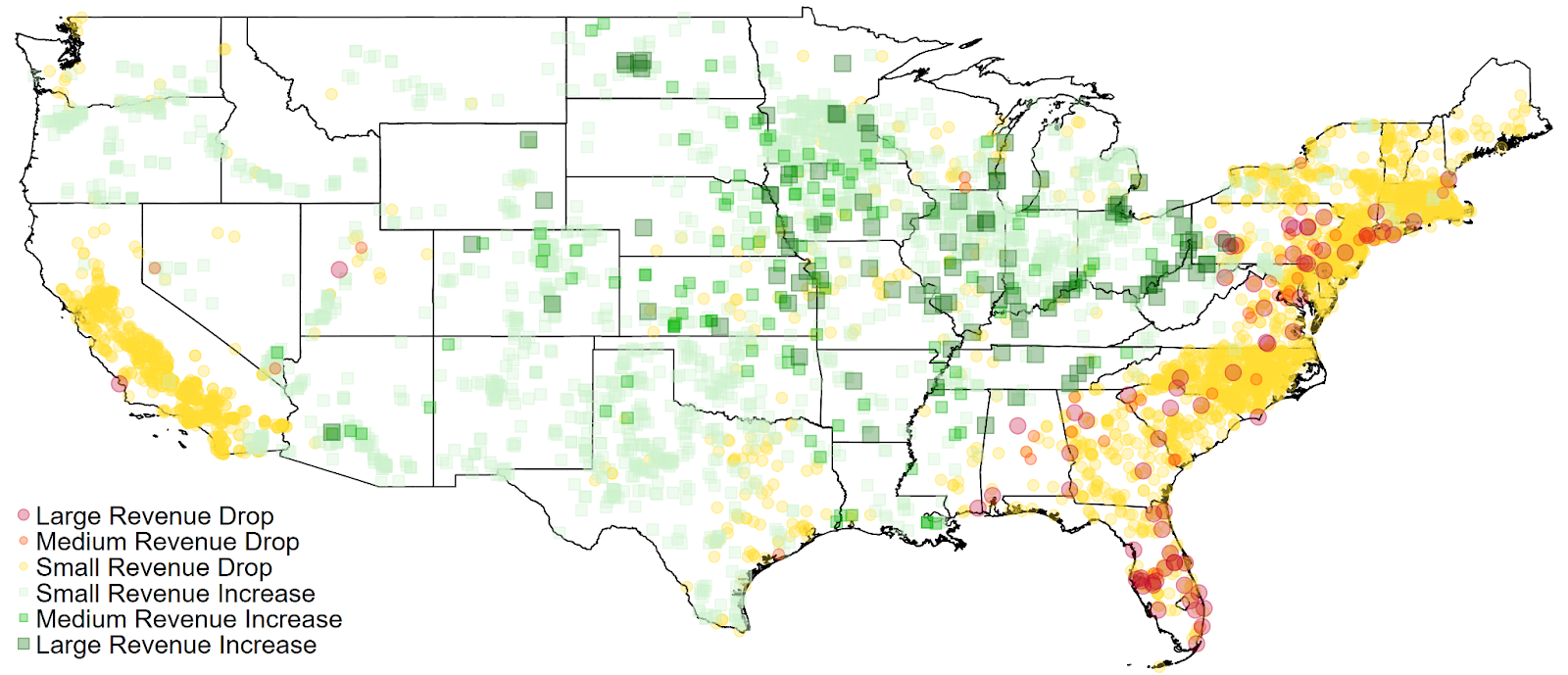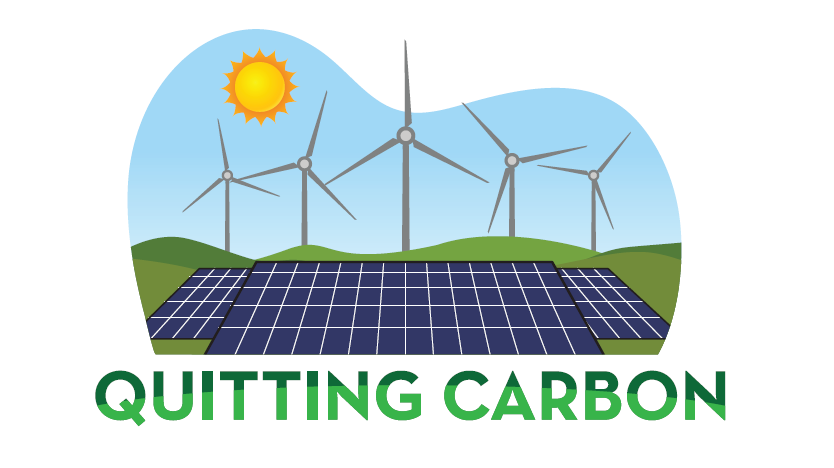What I’m reading: Benefits of regional transmission, Trump's assault on efficiency standards and offshore wind, and more

Quitting Carbon is a 100% subscriber-funded publication. To support my work, please consider becoming a paid subscriber or making a one-time donation.
Coming next week, I'll publish a conversation with a leader in the push to develop clean energy projects on tribal lands. I'll also be traveling to Tempe, Arizona, to attend the annual conference of the Society of Environmental Journalists. So, be watching for dispatches from the conference as well. Until then, here is another roundup of highlights from what I've been reading. Enjoy!
Regional transmission is worth the investment
Experts agree the U.S. must build new transmission lines across regions to achieve a zero-carbon power grid. Doing so will be expensive. But will the economic benefits of the new transmission infrastructure outweigh the investments needed to build it?
Yes, finds a new working paper published by a team of researchers at the University of Michigan.
“The bottom-line number in the paper is $4 billion. That is, the paper calculates that increased interregional transmission would reduce U.S. generation costs by over $4 billion annually,” writes Lucas Davis in a post at the blog of the Energy Institute at the Haas School of Business at the University of California, Berkeley. Davis is a professor at the Haas School and a faculty affiliate at its Energy Institute.
The paper also measures the impact of increased interregional transmission for individual power plants (see map below), with economic winners (green) located mostly in the interior and economic losers (yellow and red) located on the coasts.

“Why is it so hard to build interregional transmission? The paper offers a compelling and I think highly credible explanation,” writes Davis.
“It stands to reason, then, that incumbents in these regions would have incentives to delay or even block the development of new long-distance lines,” write the authors of the paper.
“The paper strengthens the argument for enhanced federal authority for transmission. Increased transmission capacity creates economic benefits that are widely diffused across regions, and a federal authority can take these ‘public good’ characteristics into account when evaluating projects in a way that individual entities are not incentivized to do. FERC [Federal Energy Regulatory Commission] has long been the central authority for natural gas pipelines, and a similar approach could be adopted with electricity transmission,” concludes Davis.
As Trump pushes the U.S. backwards on energy efficiency, China races ahead
I argued in a recent column that President Trump is governing as if rising costs don’t matter. To bolster my case, I cited Trump’s determination to roll back energy efficiency standards for a range of household appliances and products.
Now, rather than attempt to weaken or rescind the standards established during the Biden administration via the regulatory process under the law, the Trump administration may simply try to kill the federal government’s ability to develop the standards at all.
“With the aid of Elon Musk’s Department of Government Efficiency team, Trump appears to be attempting an end run that could succeed where his past attempts failed: by simply terminating the consulting contract that the Department of Energy relies on to develop and enforce the rules,” ProPublica’s Peter Elkind reported last week.
“In late March, DOGE’s ‘wall of receipts’ stated that it had ‘deleted’ a Department of Energy contract for Guidehouse LLP (a PricewaterhouseCoopers spinoff) for ‘Appliance Standards Analysis and Regulatory Support Service,’ producing a listed savings of $247,603,000. That item has now disappeared from the DOGE website, and its current status remains unclear,” he added.
Meanwhile, China is pushing for faster adoption of heat pumps, with the government implementing a 2030 target to increase the energy efficiency of key products by more than 20%, according to a government action plan released on April 2.
“The new action plan outlines efforts to encourage expanded heat pump adoption, including use in public buildings such as schools and hospitals, as well as in the industrial, agricultural, and transport sectors,” Jiang Mengnan reported at Dialogue Earth last week.
“Several regions in northern China are already incorporating heat pumps into their clean heating policies. During last year’s heating season, Beijing offered subsidies covering 40% of the cost, capped at CNY 6,000 (USD 816) per household, for residents in rural villages to upgrade to low-temperature air-source heat pump water heaters meeting specific performance standards,” she added.
Trump is serious about killing the U.S. offshore wind industry
When the White House released Donald Trump’s Day 1 presidential memorandum targeting the offshore wind industry, most observers believed the memo would apply to future projects, and to existing projects still in the permitting phase, but not to projects already under construction.
This week, we learned that even projects under construction will not be spared from Trump’s antipathy for wind turbines. On Wednesday, Interior Secretary Doug Burgum issued a memorandum directing the federal Bureau of Ocean Energy Management to “order Empire Wind to cease all construction activities on the Empire Wind Project.” Burgum’s memo alleged that “staff of the Department of the Interior has obtained information that raises serious issues with respect to the project approvals for the Empire Wind Project."
Empire Wind is being built by the Norwegian energy giant Equinor in waters 15-30 miles southeast of Long Island. The project’s first phase (810 megawatts) was already under construction at sea. Construction on the project’s onshore support hub, the South Brooklyn Marine Terminal, started in June 2024. In all, more than 1,500 people were working to build the project.
Equinor released a statement Thursday stating that it was suspending offshore construction on Empire Wind.
Project backers were quick to denounce Burgum’s stop-work order.
“Halting construction of fully permitted energy projects is the literal opposite of an energy abundance agenda,” said Jason Grumet, CEO, American Clean Power Association, in a statement. “Doubling back to reconsider permits after projects are under construction sends a chilling signal to all energy investment.”
“As Governor, I will not allow this federal overreach to stand. I will fight this every step of the way to protect union jobs, affordable energy and New York’s economic future,” said New York Governor Kathy Hochul (D) in statement.
Equinor’s measured response also included a threat of legal action.
“Empire is engaging with relevant authorities to clarify this matter and is considering its legal remedies, including appealing the order,” the company said in its April 17 statement.
Anticipating that the Trump administration might resort to measures like this – issuing a stop-work order for an offshore wind farm already under construction – I argued recently that California's political leaders needed to step up to protect the state’s fledgling offshore wind industry.
Biden was working to decarbonize cement, Trump has reversed course
Concrete is ubiquitous. Just about any large infrastructure project cannot be built without it. But the conventional methods used to produce cement, the binder that fixes concrete, are notoriously carbon intensive, responsible for about 8% of global CO2 emissions.
Efforts to curb climate pollution from the sector are facing new political headwinds, Floodlight’s Ames Alexander reported this week.
“Moves to decarbonize the cement industry picked up speed during the administration of President Joe Biden, which channeled billions of dollars in Inflation Reduction Act (IRA) money toward reducing the carbon footprint of concrete and other construction materials,” writes Alexander.
“The Trump administration has reversed course. In January, the Environmental Protection Administration canceled 21 grants aimed at reducing greenhouse gas emissions from concrete, cement and other construction materials, according to a spreadsheet compiled by The Sierra Club from EPA records.”
“There's definitely concern that the momentum is broken,” Yong Kwon, senior campaign advisor for Sierra Club's Industrial Transformation Campaign, told Alexander.
Floodlight’s Rosie Gillies flagged this story for me. Thank you, Rosie!
Caltrain’s electrified trains are healthier, too
In previous roundups, I’ve written about the incredibly successful electrification of the Caltrain commuter rail line that runs between San Francisco and San Jose. Ridership has surged and the electrified train is cheaper to operate.
It turns out the wins don’t stop there. The switch from diesel to electric trains last summer has also significantly improved air quality on the trains and at the system’s stations.
According to a new UC Berkeley study published this week, “electrifying the system reduced riders’ exposure to the carcinogen black carbon by an average of 89%, and significantly reduced ambient black carbon concentrations within and around the San Francisco station.”
“The transition from diesel to electric trains occurred over just a few weeks, and yet we saw the same drop in black carbon concentrations in the station as California cities achieved from 30 years of clean air regulations. It really adds to the case for electrifying the many other rail systems in the U.S. that still use old, poorly regulated diesel locomotives,” said study senior author Joshua Apte, a professor of environmental engineering and environmental health at UC Berkeley, in a press release.
Bonus: Michael Lewis’ Who Is Government?
The Trump administration’s treatment of federal employees is an abomination. As the son and brother of career federal civil servants, I find Donald Trump, Elon Musk, and the DOGE minions’ utter contempt for federal employees and their families beyond the pale.
In his last two books, author Michael Lewis has made it his mission to highlight and honor the work done by federal civil servants. Lewis appeared on “The Late Show with Stephen Colbert” earlier this month to talk about his new book Who Is Government?.
“I increasingly realized the people who were the story. The people were amazing. I don’t know what I expected. Bureaucrat. Deep state. It was mission-driven, passionate, problem-solving people. Experts who could have made a lot more money in the private sector,” says Lewis during the segment.
He went on: “They’ve betrayed the trust of federal workers. … They are service-oriented people. They are not about themselves. They are about doing things for other people. … These are people who have figured out how to lead a meaningful life. … These people did meaningful work that protected us and made our lives better.”
“That we have allowed a politician to demonize them and traumatize them is such a damning statement about the state of our soul. We should not have allowed this to happen.”
Please watch the clip. And then take a moment to thank the federal employee in your life, or one that makes your daily life just a little bit better, for their public service.




